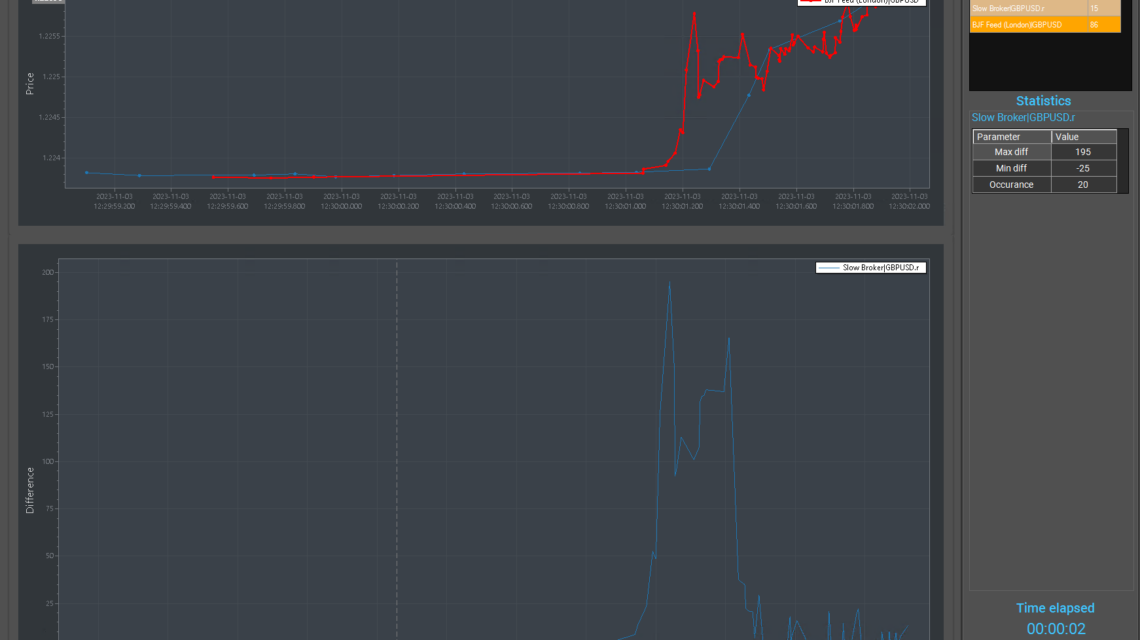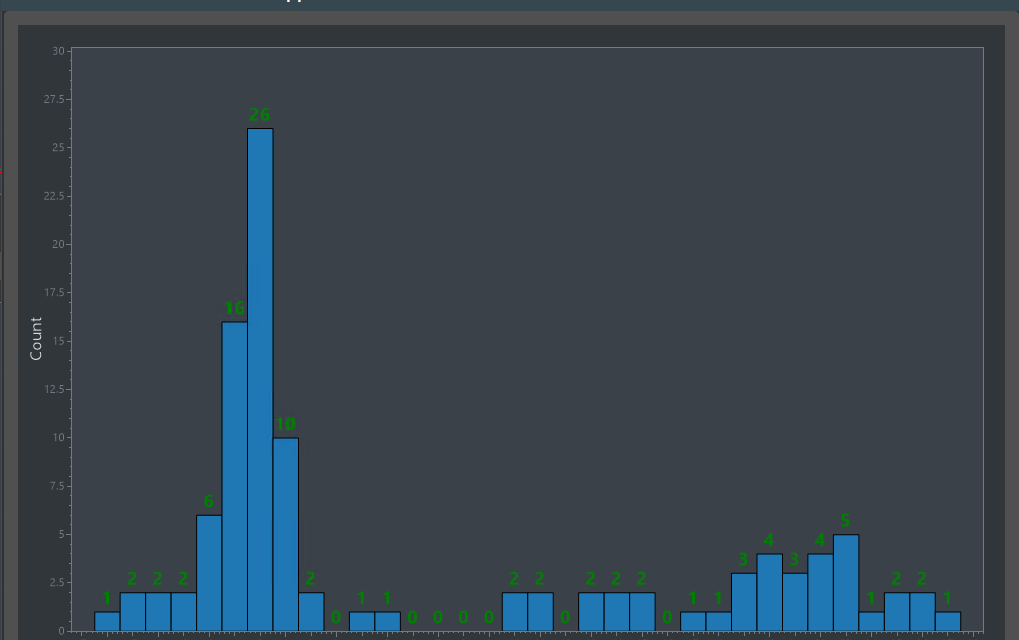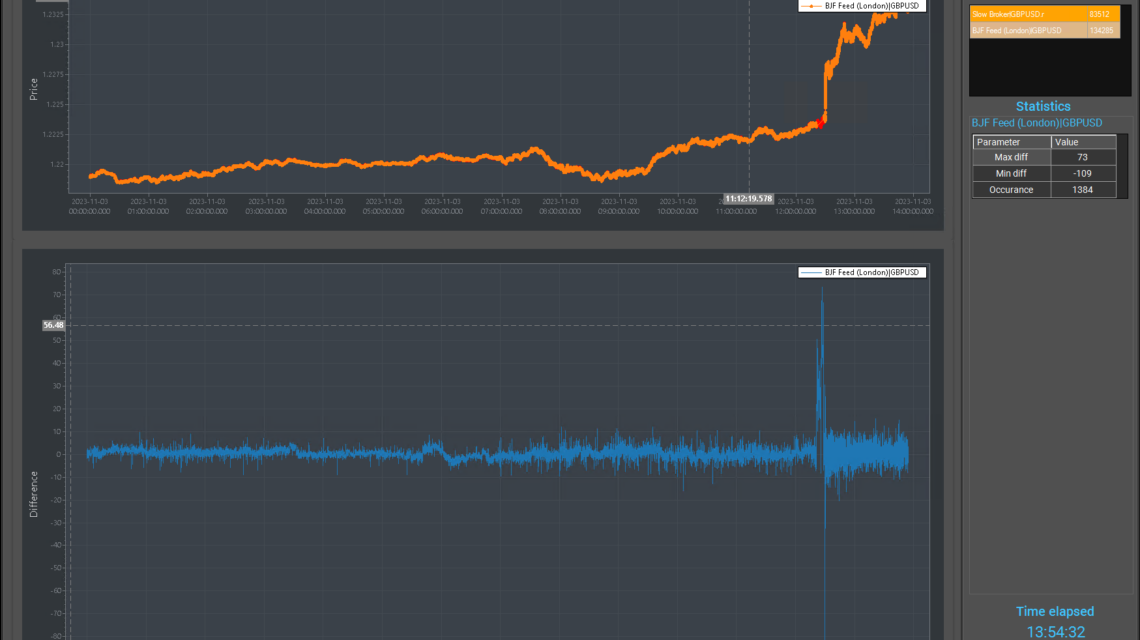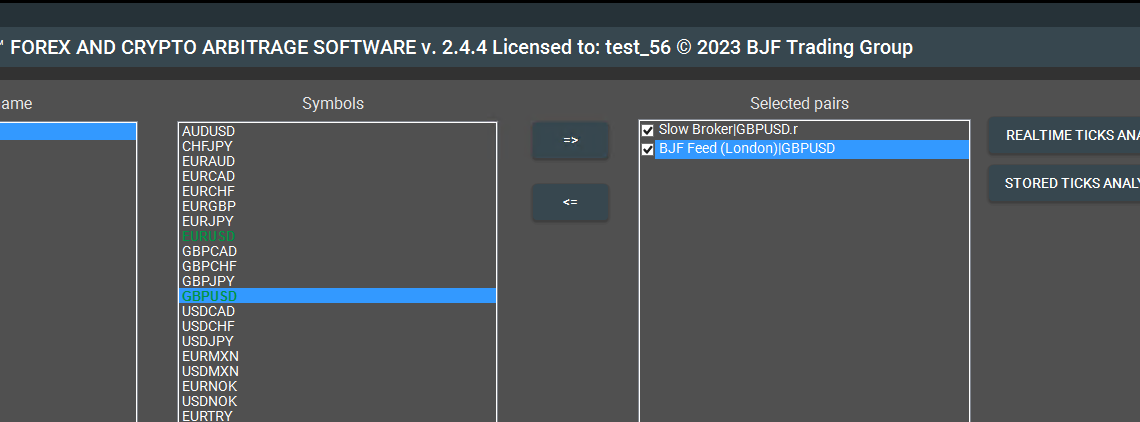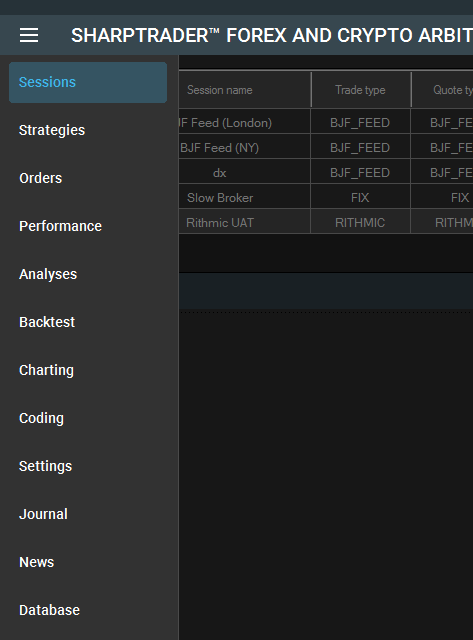The Critical Role of Tick Comparison in Forex Arbitrage and High-Frequency Trading (HFT) Tuesday November 7th, 2023 – Posted in: Arbitrage Software, cryptoarbitrage software – Tags: arbitrage trading, fast feed for arbitrage, hft brokers, sharptrader, ticks analyses
Introduction:
In the realm of Forex trading, the strategies of arbitrage and high-frequency trading (HFT) sit at the apex of the need for speed and precision. The cornerstone of both methodologies is the comparison of ticks – minute price movements – from various data sources. This tick comparison is not just a tool but a powerful weapon in a trader’s arsenal specializing in these techniques. Below, we’d like to talk about why tick comparison is crucial for HFT and arbitrage strategies and outline how to compare ticks and assess brokers for their HFT capabilities effectively.
Understanding Tick Data in HFT
In HFT, traders utilize advanced algorithms to execute a large number of orders at breakneck speeds. Each tick can represent a new opportunity or a change in strategy. For HFT traders, the ability to process and act upon tick data faster than the competition can mean the difference between profit and loss.
The Importance of Tick Comparison in HFT and Arbitrage Trading
Real-Time Decision Making
HFT relies on real-time data analysis and decision-making. The comparison of ticks across different brokers or liquidity providers can signal opportunities for arbitrage that HFT strategies can exploit in milliseconds.
Precision in Execution
The accuracy of tick data is paramount. Precise tick comparison allows for finely tuned entry and exit points, the difference to open, minimizing slippage, and maximizing potential gains.
Broker Performance and Selection
For HFT, not all brokers are created equal. Tick comparison can help select a broker that provides the fastest and most reliable data, which is a critical component for the success of HFT strategies.
Liquidity Assessment
Tick data comparison can provide insights into market liquidity. A fast feed showing consistent ticks suggests high liquidity, while a slow broker might indicate a lack of market depth.
Strategy Refinement
Tick data is invaluable for back-testing and refining HFT algorithms to ensure they perform at peak efficiency in live trading environments.
How to Compare Ticks and Test Brokers for HFT
Video 1 – Master the Art of Forex Arbitrage with SharpTrader – Your Ultimate Tool for Tick Analysis!
Advanced Arbitrage and HFT Software
Utilize dedicated software like SharpTrader Arbitrage Software that can handle the rigors of HFT, including the ability to process tick data from multiple sources quickly. SharpTrader allows you to analyze and compare ticks from different feeds and brokers. You ended this to understand how many arbitrage situations occur for an instrument, how fast your feed is and how much faster it is than your slow broker, how much time you need to open an order and so on. So to get to this tool I open the sharp trader menu and select analysis.
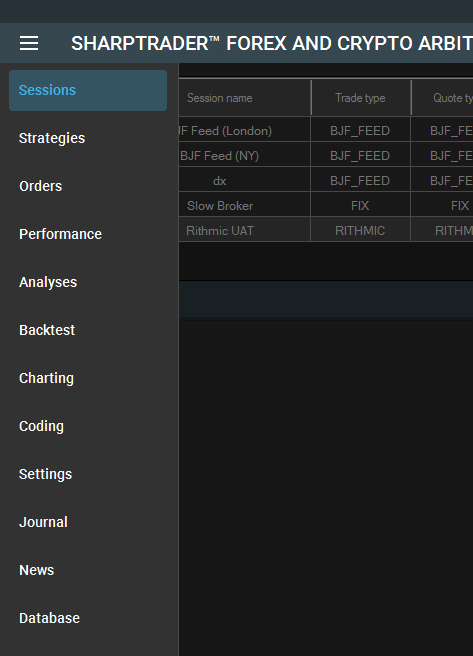
Fig. 1 – SharpTrader – Ticks analyses menu
We see the names of our sessions and the currencies. Currencies which are highlighted in green, are those which we indicated to collect ticks for, and for these green instruments, we can analyze them using stored tick analysis. If the instruments are white we can only analyze in real time. I already added a GBPUSD slow broker and GBPUSD fast feed from London end-point and add these brokers / instruments to the analysis

Fig. 2 – SharpTrader add brokers and instruments into ticks analyses

Fig. 3 – Ticks for GBPUD for 1 day slow broker vs fast feed
Analyzing each difference between slow broker and fast feed you can understand how long the difference was and how many time you have to open order etc.

Fig. 4 – Difference between fast feed and slow broker analyses

Fig. 5 – Difference between fast feed and slow broker redistribution
Latency Measurement
Measure the latency of both the data feed and trade execution. Lower latency is critical for the success of HFT strategies.
Simulated Trading Environments
Use demo or simulated trading to test how tick comparison strategies perform in real-time without risking capital.
Slippage Analysis
Test brokers by comparing the expected execution price against the actual executed price to assess slippage during high-frequency trades. Adding to the importance of tick comparison, here is an expanded view of how it enables traders to maximize their arbitrage and HFT strategies:
Extended Use of Tick Comparison in Forex Arbitrage and High-Frequency Trading
Tick comparison is not only foundational in identifying price discrepancies in real-time, but it also provides traders with crucial insights into the market’s behavior over the course of the day. This data is invaluable in enhancing trading strategies for different instruments. Here’s how:
Identifying Arbitrage Opportunities
By comparing ticks between a fast feed and slow brokers, traders can quantify the number of arbitrage opportunities that arise throughout the day across different trading instruments. This frequency analysis is pivotal in determining the most lucrative instruments for arbitrage at any given time.
Strategy Optimization
Adjusting the price difference threshold necessary to trigger an arbitrage trade can lead to more accurate openings. Through tick comparison, traders can fine-tune their strategies to identify the precise moment to enter the market, based on the delay between the fast and slow brokers.
Understanding Broker Delays
Tick comparison sheds light on the latency or delay inherent between a fast price feed and a slower broker’s response. Recognizing this delay allows traders to adjust their algorithms to account for this lag, thereby optimizing the timing of trade execution.
Statistical Analysis
Traders can use statistical analysis on tick data to anticipate the frequency of arbitrage situations. By doing so, they can allocate resources more effectively, targeting instruments that offer the highest probability of arbitrage situations.
Enhancing Trade Execution
Knowing the exact delay between a fast feed and a slow broker not only informs the trader about the best time to execute trades but also helps in setting up subsequent trades. For instance, if a trader knows that a particular broker consistently lags behind the fast feed by a certain time, they can program their algorithm to exploit this pattern.
Risk Management
Understanding tick disparities can also aid in risk management. Traders can set parameters to avoid arbitrage on instruments that show too few opportunities or present too great a latency risk, thereby protecting their capital from unprofitable or risky endeavors.
Dynamic Adjustment
Tick comparison enables dynamic adjustment of strategies. For example, if a particular currency pair shows increasing arbitrage opportunities as a trend, traders can dynamically allocate more capital to this pair to maximize returns.
In conclusion, the capability to compare ticks is an indispensable function that allows traders to discern the number of arbitrage situations during the day for different trading instruments. It empowers them with the ability to adjust their entry difference more accurately and to understand the delay between fast and slow brokers, leading to more sophisticated and potentially profitable arbitrage and HFT operations. Such a granular level of control and insight into the mechanics of trade execution is what sets advanced traders apart in the fast-paced world of Forex trading.
Conclusion
Tick comparison is the pulse by which HFT and arbitrage traders measure the heartbeat of the Forex market. The precision and speed with which these comparisons are made underpin the potential success of such strategies. By employing advanced technology, thorough testing, and continuous refinement, traders can utilize tick data to its fullest potential, creating opportunities within the Forex market that are invisible to the naked eye. As the financial markets evolve with technology, the role of tick comparison in HFT will only grow in importance, demanding traders stay at the forefront of innovation to maintain a competitive edge.
 Deutsch
Deutsch 日本語
日本語 العربية
العربية 한국어
한국어 中文
中文
